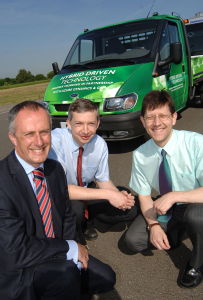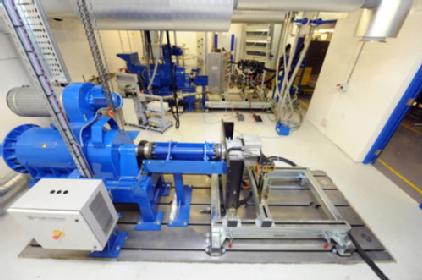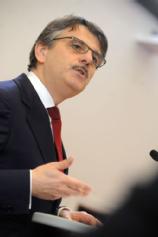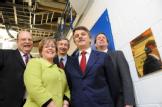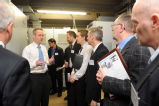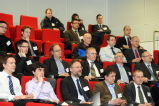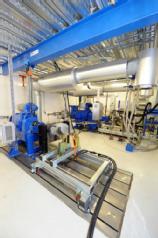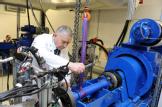Hybrid electric powertrains
Hybrid Electric Powertrain Test Facilities for Automotive and Sustainable Power ApplicationsThe UK Government’s carbon reduction strategy for transportation stresses the need for decarbonising transport as an essential part of building a low carbon future for Britain. This will be achieved through a mix of technology solutions that includes increased fuel efficiency, the use of sustainable biofuels and hybrid electric vehicles.
The Hybrid Vehicle Research Group at the University of Warwick was established in 2005 and is focussed on the technology of hybrid vehicles and understanding how these vehicles are utilised by the end user. The research group developed a hybrid powertrain simulation model called WARPSTAR (WARwick Powertrain Simulation Tool for ARchitectures) which can be used to model any hybrid vehicle architecture. The model includes a library of real world component data for the main powertrain components, and can be used in conjunction with any velocity-time drive cycle profile. It is currently being enhanced to include representations of realisitc driver behaviour, links to transport and city energy models and prediction of dynamic attributes. Building on WARPSTAR, the research group has now established a new Vehicle Energy Facility (VEF) – funded by Advantage West Midlands (AWM) and the European Regional Development Fund (ERDF) as part of the Birmingham Science City initiative - that is a purpose-built facility for test and characterisation of hybrid vehicle powertrains. The VEF complements the Hybrid Vehicle Research Group’s existing modelling and simulation capabilities and offers clear benefits to users through a combination of the two methods. The facility is comprised of:
The facility has been designed with the aim of servicing the automotive industry, however its usage is not limited to this sector. The VEF is of interest to companies in all sectors which have a requirement to test the performance of internal combustion engines or electric machines. For example, the facility can be used to characterise the performance of electrical generators for the wind turbine industry.
The hybrid electric research programme at Warwick complements the work of the Birmingham Science City laboratory that focuses on rail and heavy vehicle applications, based at the University of Birmingham. Collaborative projects using both facilities are envisaged. The VEF research is led by Dr Paul Jennings who with 20 years of experience in automotive research leads the University of Warwick’s research on hybrid and electric vehicle technologies and the factors affecting their successful introduction. The team also includes: Dr Peter Jones, a Reader in Systems Engineering with nearly 30 years of experience in the application of system modelling and control techniques to automotive systems; Dr Andrew McGordon, an expert in driver modelling and vehicle modeling; and Mark Amor-Segan, a Principal Engineer specialising in automotive electronics and software. The Hybrid Vehicle Research Group works with many industrial partners and welcomes opportunities to form new partnerships and collaborations, particularly with businesses based in the West Midlands. For further information, including proposals for collaboration or access to the facilities: Mark Amor-Segan, International Automotive Research Centre, Warwick Manufacturing Group, University of Warwick, CV4 7AL. Email: mark.amor-segan@warwick.ac.uk Tel: +44 (0) 24 76575431 Mike Ahearne, Business Engagement Manager for the Birmingham Science City Energy Efficiency & Demand project. Email: m.ahearne@warwick.ac.uk Mobile tel: +44 (0)7824 541173
|
